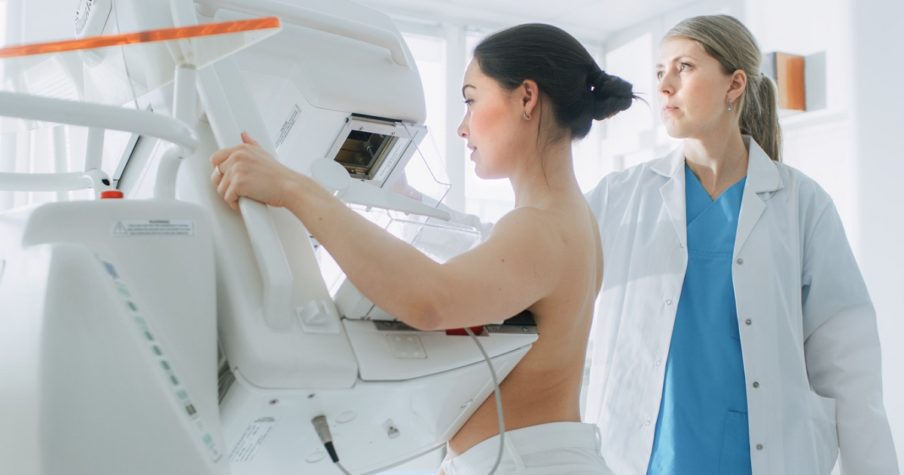Why should women take advantage of this 3D mammography technology? Some reasons are provided below.
The better to see you!
A 3D mammogram allows the radiologist to see masses and distortions associated with cancers much more clearly. A good analogy is to think of the pages in a book. If you look down at the cover, you can’t see all the pages. But, when you open the book up, you can go through the entire book one page at a time to see everything between the covers.
3D mammography is designed with the same concept in mind.
With 3D mammography, radiologists can see through possible overlapping tissue in the breast. That results in better visualization of early cancers that are difficult or impossible to see with conventional 2D mammography. Breast tissue is imaged in very thin layers with 3D, so the radiologist can see details that used to be obscured by the overlap of tissues with a conventional mammogram.
3D mammography also provides improved depiction of a woman’s breast tissue during screening and more confident interpretation by the radiologist, resulting in decreased call backs for additional images.
We are better detectives!
Nationally, 3D mammography has been show to increase the cancer detection rate – not by a little – but by about 33 percent! That’s a huge number in terms of improving a diagnostic test. The consensus seems to be that 3D mammography really does help radiologists detect breast cancer sooner.
This imaging method in creases the sensitivity and the specificity of a test at the same time. Having a tool helping a radiologist to be more sensitive and specific is a tremendous advantage!
So who benefits?
Literature shows that all breast types benefit from 3D mammography and all women who visit Capitol Imaging Services are offered the opportunity to have 3D. For women with dense breast tissue, breast cancer survivors and those with a genetic predisposition to breast cancer, 3D mammography is considered the preferred method of breast imaging.
The 3D technique is done at the same time as the conventional digital 2D mammogram is performed. The experience is nearly identical to a conventional mammogram, with the same positions and compressions required. For each of the four mammographic views, it takes and additional four seconds for the device to sweep above the breast in a slight arc and take the additional 15 low-dose images.
Because it is done at the same time as 2D, 3D mammography has a minimal amount of additional radiation. The dose is well below federal limits for a screening mammogram and is similar to conventional film-screen mammography. Since 3D imaging can markedly reduce the need for additional mammographic views, the overall radiation dose will actually decrease in some women.
If you decide a screening mammogram is right for you, we invite you to speak to your physician about 3D mammography. Then, visit Capitol Imaging Services. Give about 20 minutes of your time. That’s all that’s needed.


